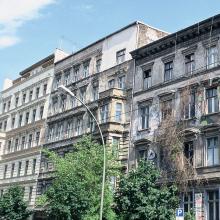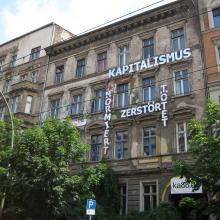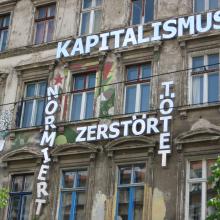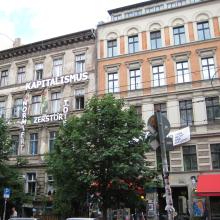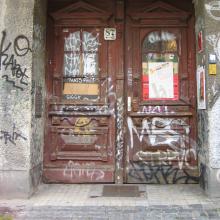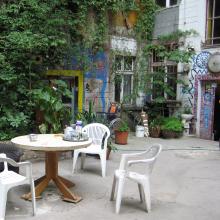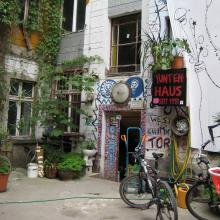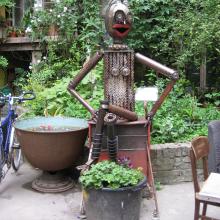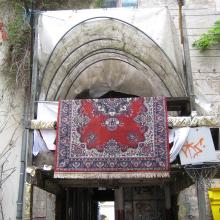KA86
The KA 86 and Tuntenhaus Hausprojekte are both housed in a nineteenth-century building on 86 Kastanienallee, in the neighborhood of Prenzlauer Berg. This neighborhood was located in East Berlin; in the postwar era, most of the buildings in the area were deteriorated, showing signs of weathering, grime, and even war damage. The East German government focused on other parts of the city, and Prenzlauer Berg became a haven for alternative cultures and subcultures: the punk scene, bohemians, artists, political dissidents, alongside longtime residents from before the war who remained in the area. After the fall of the Wall, and especially in 1990, the area became the focus of a wave of new squats and cultural occupations (art venues, illegal nightclubs, parties, etc.).
Most of the squats of the early 1990s were evicted, some were legalized, and some migrated elsewhere in the city. Today, Prenzlauer Berg is one of the most gentrified and expensive areas in Berlin. Most of the old buildings have been renovated, modernized inside and out, and now the neighborhood offers condos, upscale rentals, offices, fancy restaurants, and boutiques.
The Tuntenhaus and KA 86 are among the few remaining alternative Hausprojekte. The façade is proudly kept in a dilapidated state, dense with soot, ivy, and graffiti. Banners and lettering announce their difference from the gentrified surroundings, and their desire to carve out affordable living spaces in a central neighborhood. The Tuntenhaus also makes a stand for gender diversity, as it was founded by and for gay males.
The KA 86 and Tuntenhaus are not squats anymore; they occupy the building legally and pay rent. However, their landlord would like to redevelop the building for more profitable uses, and therefore the status of the two Hausprojekte in their current building is far from guaranteed.
